Buying a complete scooter when you’re first starting out is a great way to get into the sport. You can learn to ride easily, as well as start to practice your favourite tricks and stunts. But as you get deeper into the sport, you’re going to start to find you need parts that suit the kind of riding you do. You’re also going to need to replace parts as they wear out – after all, trick and stunt riding is hard on your scooter. So today we are going to discuss the top 10 scooter parts you should buy.
What Scooter Parts Do I Need?
This question comes up quite a lot when riders are either replacing parts or looking to build their first scooter. Below is our list of top 10 scooter parts you should buy. We’ll go into more detail on each part further down in the blog.
The most common parts you will need are:
- Wheels
- Bearings
- Grips
- Fork
- Deck
- Clamp
- Bars
- Headset
- Griptape
- Brakes
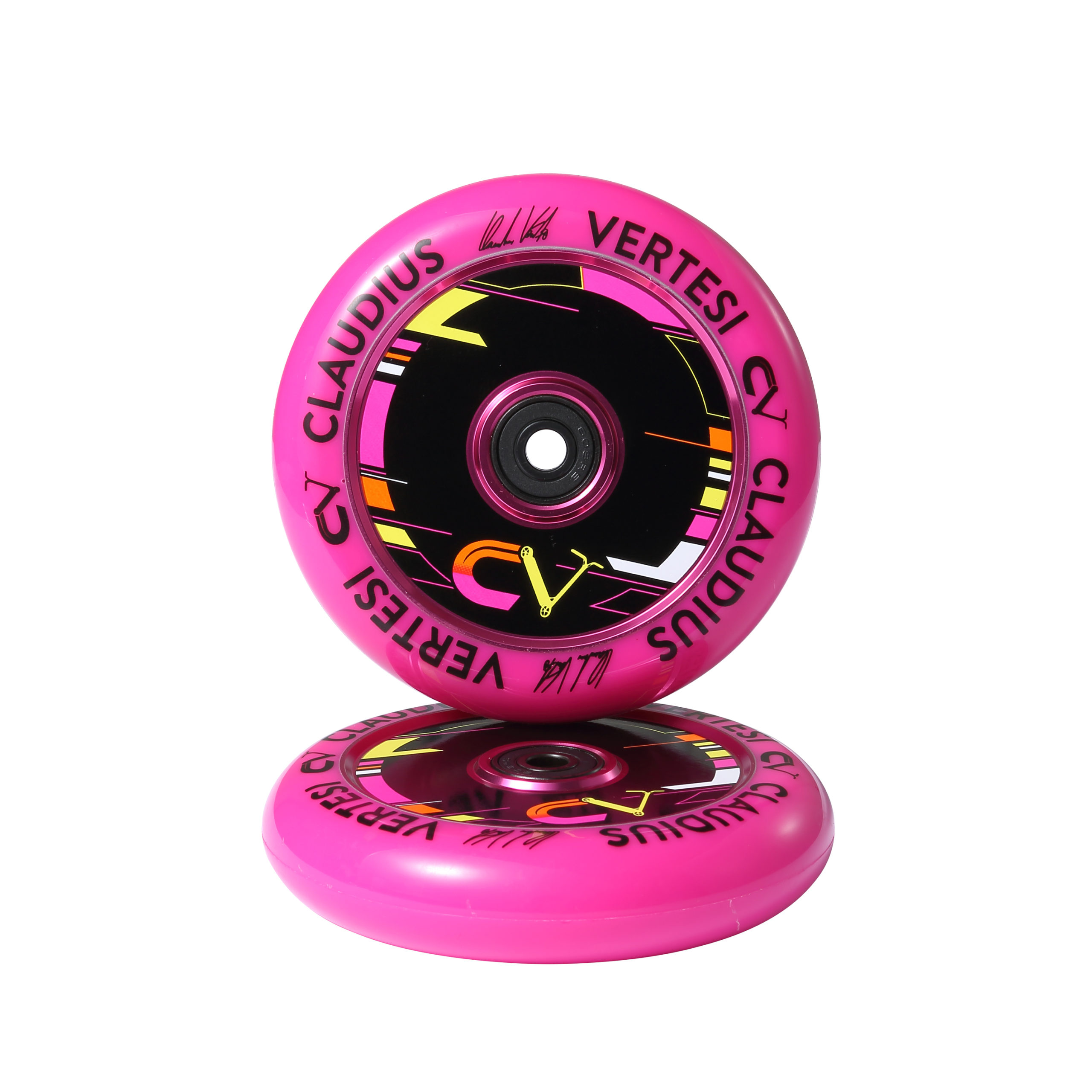
1: Scooter Wheels
Most completes will already come with wheels. By embedding polyurethane thread into a plastic core wheel, you create some of the best high quality wheels on the market. They are light, wear resistant, have great grip in dry weather, and great rebound (meaning it can return to it’s original shape after compression). This makes it ideal for trick and stunt riding.
Size is also a very important part of choosing wheels. When looking at wheels, the size measurements used refer to the diameter or how tall the wheel is. In general, most scooters will have wheels around 100-110mm in diameter. The bigger/taller the wheel, the longer it takes to get the scooter going but the faster and smoother the ride. The smaller the wheel, the faster and more manoeuvrable the scooter can be.
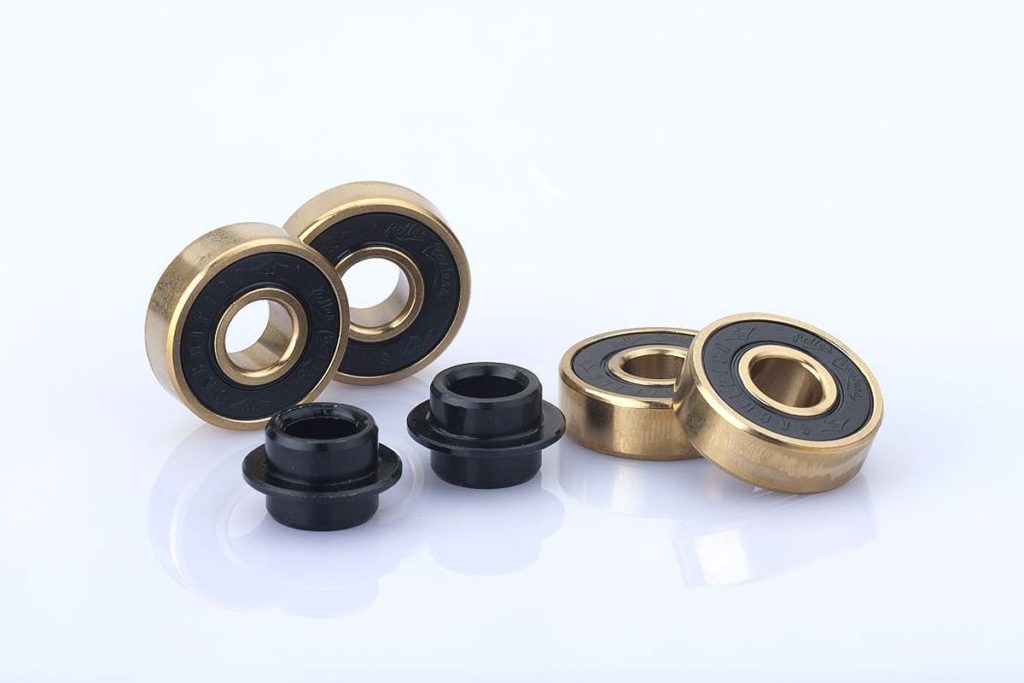
2: Wheel Bearings
Wheel bearings are incredibly important! Every scooter has two bearings. You mount these in the centre of each wheels. And these bearings come with a wide range of ratings that refer to the performance of the bearings. The higher the rating, the better the performance. There is really no downside to choosing a higher bearing rating when choosing a scooter or new scooter wheels.
The rating guide for scooter bearings is the ABEC or Annular Bearing Engineering Committee. The ratings are, from lowest to highest, 1, 3, 5, 7, and 9. The higher the rating, the higher the precision. And the higher the precision, the better the performance. Quality is also important – a high quality ABEC 7 will outperform a low quality ABEC 9. Most adult scooters feature bearings from a 5 to 7. However, Sacrifice Scooters carry ABEC 9 rated, to provide the highest precision possible.
You can easily replace bearings. High quality brands, like Sacrifice Scooters, carry a range of high quality, high rated bearings to replace your current, standard bearings.
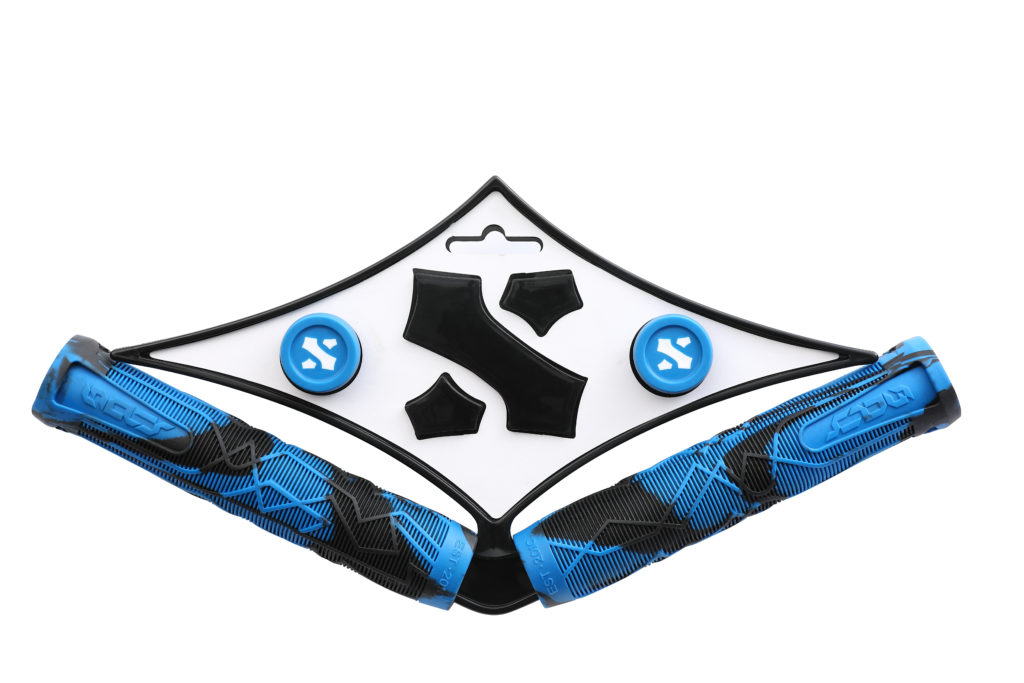
3: Grips
We fit grips to the bars of your scooter to protect your hands and arms from wear, tear and shock. High quality brands, like Sacrifice, make their grips from silicon and rubber to make them super comfortable and soft. This allows you the grip to fit into the hand, like a glove, and protect your hands and arms from the shock of riding and stunts. They also protect your hands from resting and rubbing against the metal of the bars which can cause bruising, blisters and injury.
High quality brand will also provide bar ends with their grips to ensure safety. This stops grips from slipping off the bars, which can cause accidents while riding or performing tricks. Grips can wear down over time and it is important to replace them as soon as they start to become uncomfortable when riding.
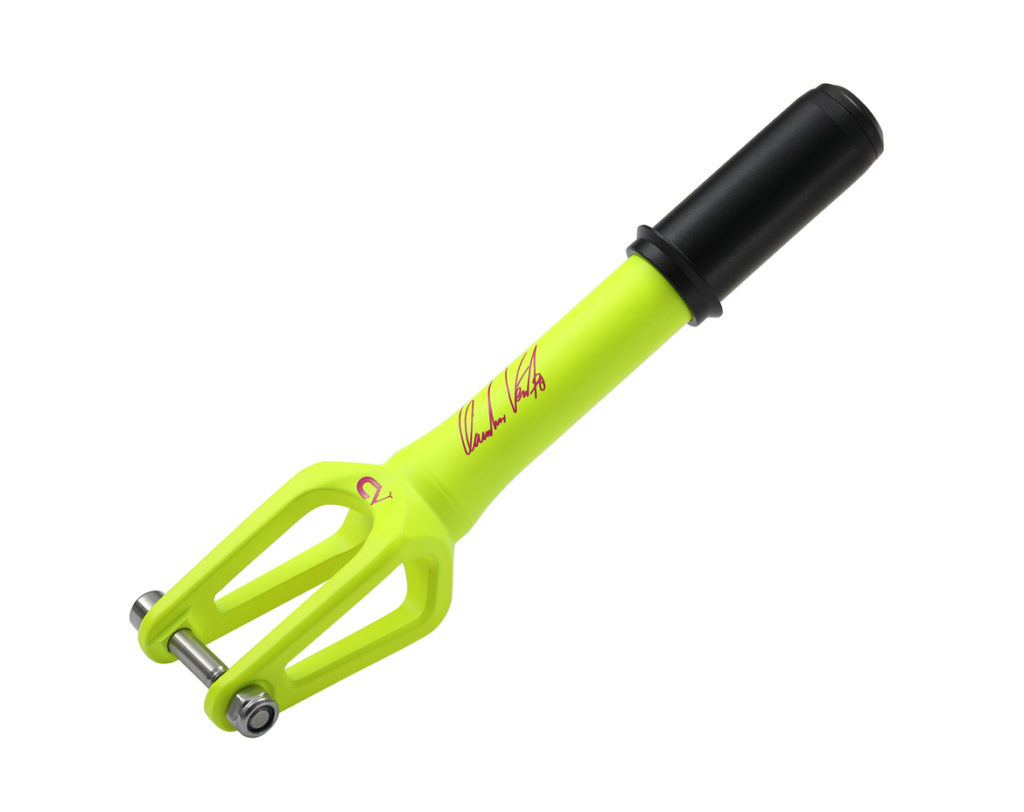
4: Scooter Fork
We design scooter forks for freestyle and trick riding. As a result, we design them using durable, strong materials like aircraft grade aluminium. This makes them light – which is perfect for trick and stunt riding – but powerful enough to take the brunt of a rough landing. We divided forks between two categories, threaded and threadless.
Threaded forks have a thread outside the tube. Threadless forks are made by welding pieces. There are also one-piece forks made utilising cold forging that allows for no welds, providing more of a strength factor over threadless fork that is weaker at the welding point. Sacrifice Scooters predominately offers aircraft grade, cold forged, aluminium forks for the greatest strength possible.
We design forks for different compression types. These are HIC, SCS, and IHC. HIC stands for Hidden Internal Compression. It is generally cheaper than SCS and is a great option for beginner riders and those on a budget. It is a solid system that is reliable and easy to work with.
IHC compression is a lighter option to HIC it is generally built into the fork itself. It is light and can be used with both steel and aluminium bars. SCS compression or Standard Compression Systems can be used on standard-sized and oversized bars. It stays tighter for longer and doest require you to split the fork or bars to work, so there’s not risk of snapping. Most Sacrifce Scooter forks come equipped with SCS compression systems.
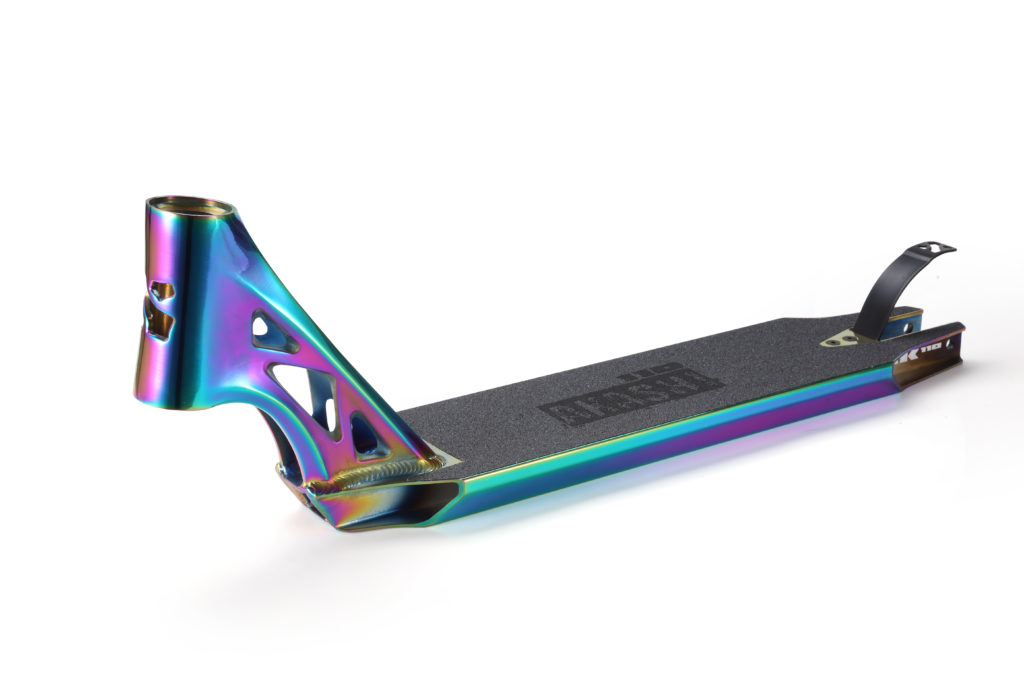
5: Deck
Of course, the key to a great scooter is the perfect deck. And the key to the perfect deck is its strength, weight, and width. The length of the deck depends on your height and riding style. Trick riders tend to prefer a shorter deck, to make it easier to perform spin tricks, and heel and tail whips. Street riders, however, prefer longer decks that let them glide and cruise for longer as the deck as more space for resting their feet. The taller you are, the longer your deck will be, as well. Though trick riders will get the shortest deck possible for their height.
Deck weight is important, especially for riders who are looking for the lightest ride possible for the most insane tricks possible. Lighter decks allow you to manipulate the scooter for better technical tricks. However, you need to also base the weight of the deck off your own weight. The older and heavier the rider, the heavier the deck will need to be to carry you. Younger riders tend to get away with a lighter deck compared to older riders. It is also relative – older riders might find a heavier deck easy to manipulate because it is suited to their size and strength, where a younger rider would struggle using the same scooter.
Finally, deck width depends on how you ride. Street riders will definitely prefer more stability and comfort that a wider deck can provide. Trick riders, however, will prefer a thinner width which is better for grinding ledges and rails, and better balance on boardslides. Thinner decks are also generally lighter, making it great for trick riders. Again, the width of the deck is relative to the size of the rider. Taller, bigger riders will need a wider deck than smaller, shorter riders.
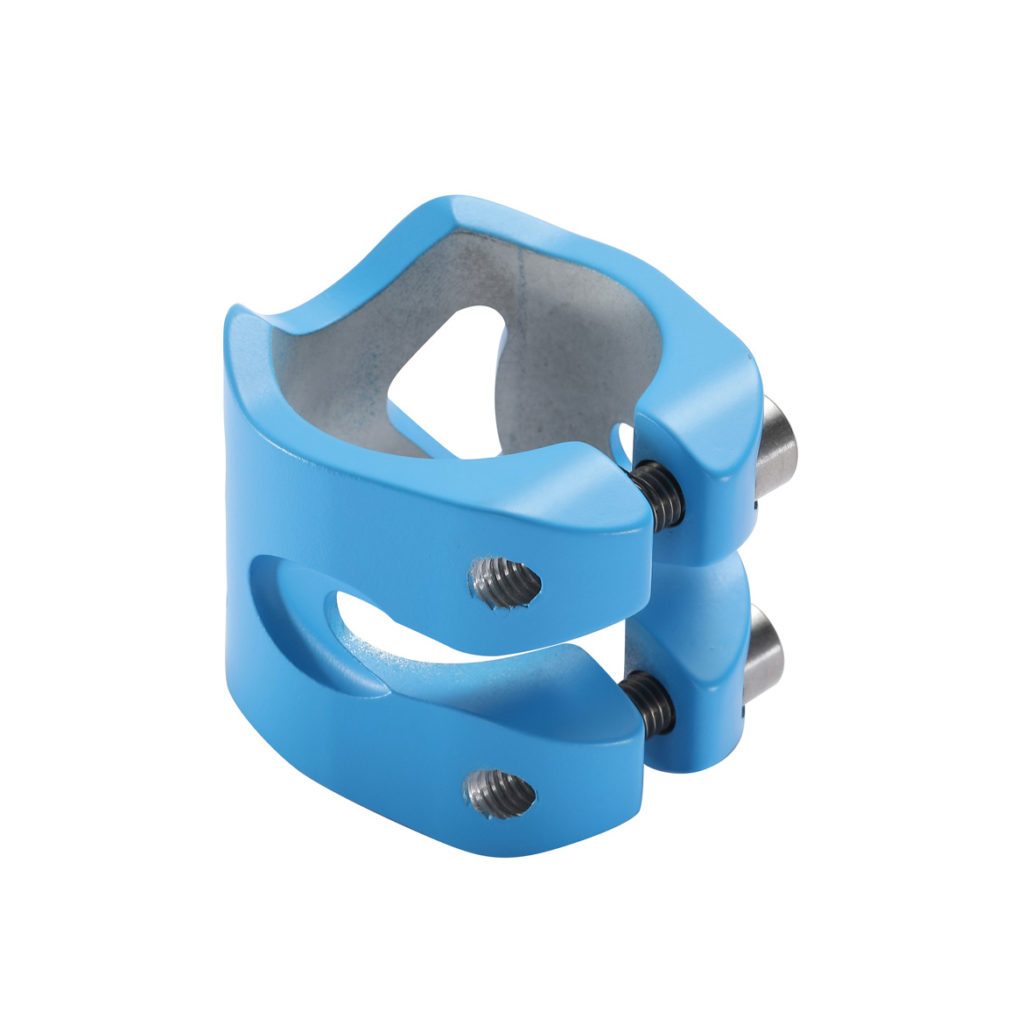
6: Clamp
A clamp is what keeps your bars fixed to the fork of your scooter. There are single, double, triple, and even quad versions of a clamp – this refers to the number of bolts. You base the type of clamp you need off what the bars dictate. For example, a bar designed for a single clamp should only be used with a single clamp. Using a triple clamp on bars meant for a double clamp, for example, will damage your bars beyond repair.
Clamps also come in different diameters based on the different sizes of the bars. These are 32mm for standard bars and 34.9mm for oversized bars. Some bars have built-in compression systems and function as a compression system for your scooter, as well as the clamp system. Remember, your clamp should always be tightened as tightly as possible, and should be tightened after the compression system.
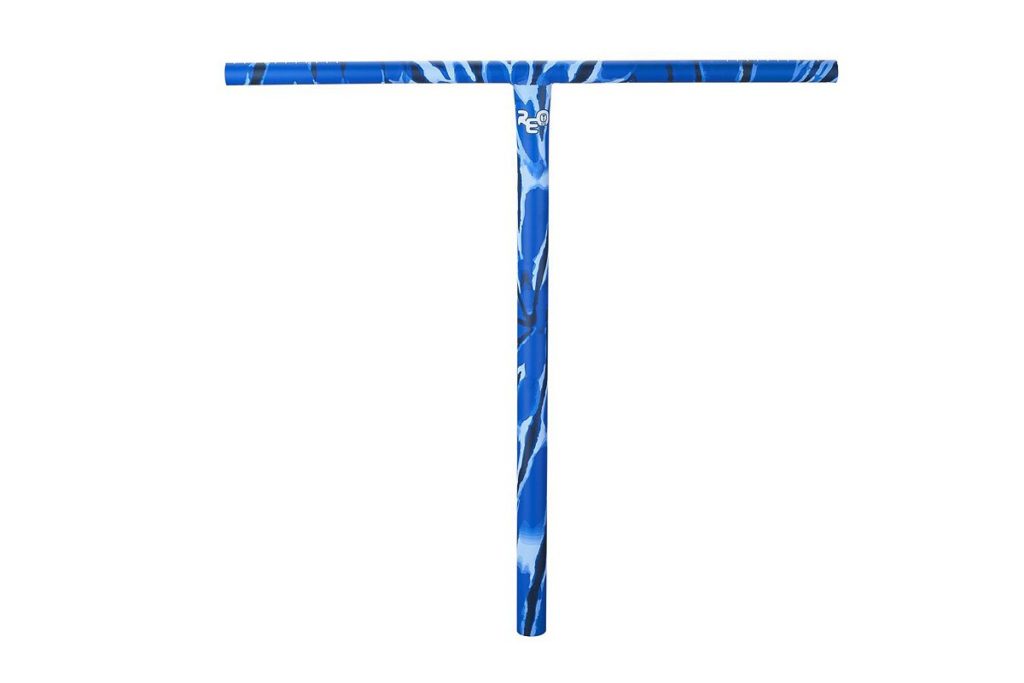
7: Bars
After the deck, the bars are the most important piece of the scooter to consider. You need to take bar height, width, and diameter into account. Height is the first consideration. The general rule of thumb is that bars should sit around the hip or waist height when standing on the deck. When you buy the bars on their own, remember the height measurement is not taking the deck or wheel height into account. So it’s a good rule to add at least 7 inches to bar measurements when buying them on their own. If they’re too high, the scooter can be difficult to control and you can even hit your face on the cross bar. Bars that are too low can make for an uncomfortable ride. Choose bars that a very slightly higher than hip height for street riding, and very slightly shorter than hip height for trick riding.
Bar width is also important. You should choose bars that are the same width as your shoulders in general. For technical tricks, you’ll probably want narrower bars. If you’re a street rider, you’ll prefer a wider bar. Bars can be cut down to suit your needs. It is better to have bars that are too wide that bars that are too small and narrow. Larger bars can always be cut down but nothing can be done about bars that are already too small.
Finally, bars come in two main diameters – standard and oversized. This means the external diameter of the downtube. It is important when choosing the right size and kind of clamp and fork you need. In general, standard bars have an internal diameter of 28mm and an outer diameter of 32mm. they work well with ICS, ISC, IHC, AND SCS compression systems. They also fit threaded forks. Oversized bars have an internal diameter of 32mm and an external diameter of 35mm. They are designed mainly for HIC compression and work with oversized clamps and forks, as well as standard forks. They can also be used with SCS.
Materials are also an important consideration. Weak materials are not going to keep up with the strain of constant tricks and landings. The most common material used is alloy which is the most cost-effective material. Aluminium (Sacrifice Scooters uses aircraft grade aluminium) offers strength as well as a lighter weight option. And titanium is the lightest possible option. Alloy tends to wear out the soonest as poor quality alloy is the most common option used by manufacturers. Aluminium is generally the best option as it offers the best of both worlds – both lightweight and durable. Titanium is also an excellent option for a strong, lightweight option.
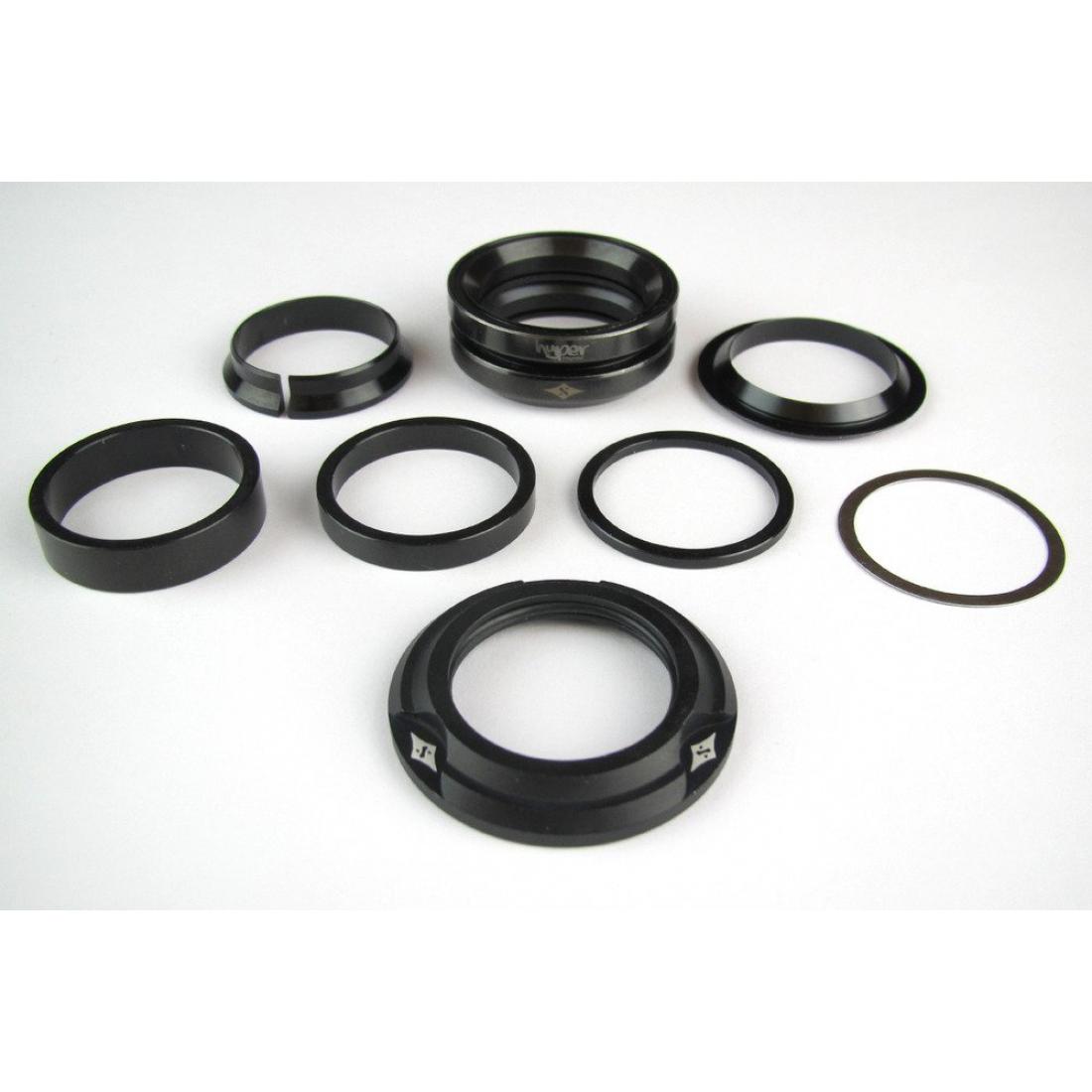
8: Headset
Another important part of your scooter is your headset. There are two types that are generally used in pro scooters – non-integrated and integrated. The headset is a set of parts that provide a way for the fork and compression to rotate within the deck headtube. Inside the two cups are bearings which provide a low friction contact between the bearing cup, and the fork steer tube. Normal pro scooter headsets and head tubes are around 1 1/8th diameter. The larger the diameter of the head tube and headset, the stiffer the steering portion of the pro scooter.
Non-integrated headsets work similarly to integrated headsets but have some extra parts. The main difference will be that the headset will include a set of cups that will need to be pressed into the head of the tube of the deck. Integrated headsets will not have the cups pressed into the scooter. To use this headset a bearing cup needs to be built into the scooter.
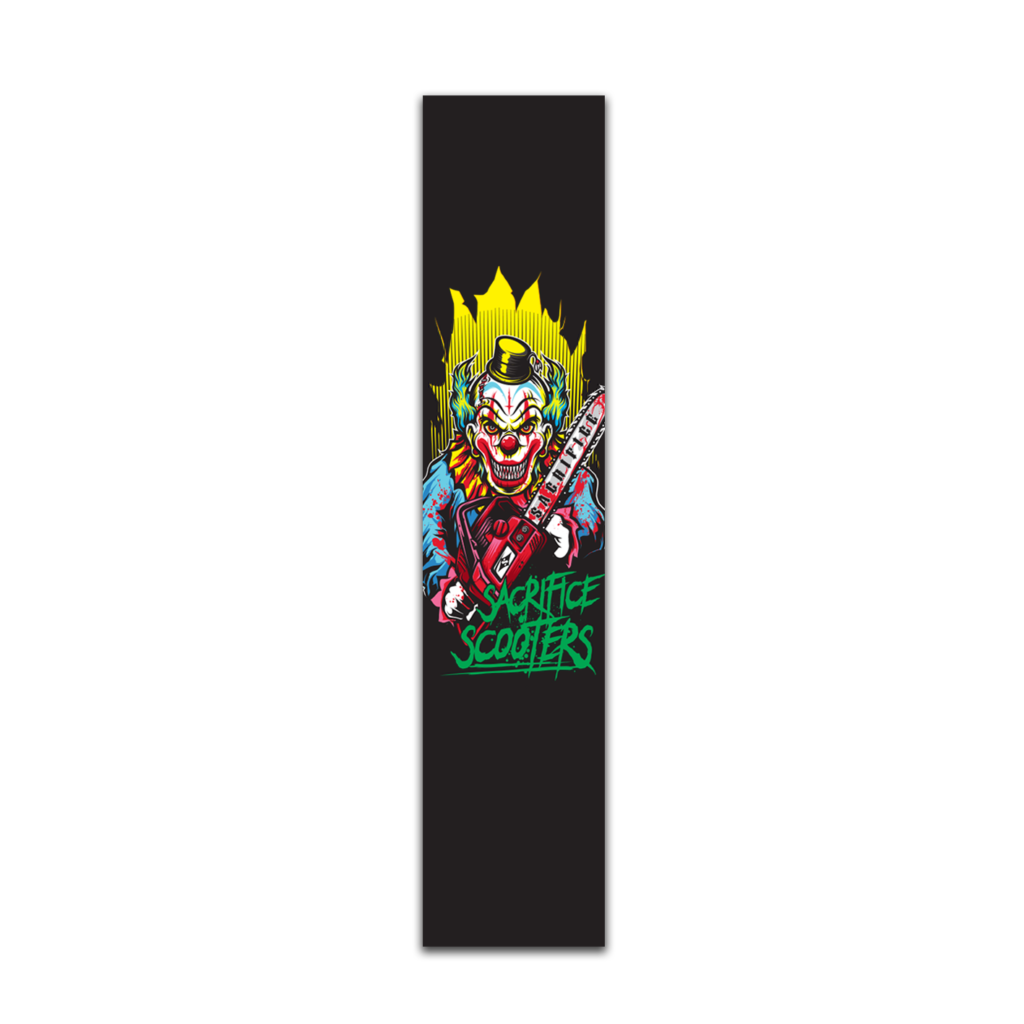
9: Grip Tape
If you’re looking to start doing stunts or you need better grip when performing tricks, then grip tape is essential. Grip tape create friction between your feet and the deck, helping you stay on as you take to the air. As well as being functional, scooter grip tape can be stylish too. Sacrifice Scooters has a wide range of custom grip tape to customise your scooters and make you stand out on the skate park.
Grip tape is the most overlooked part of the true, dialed in scooter. It is the friction that keeps you glued to the deck when you’re in the air or grinding a rail. The large grit, weather-proof surface adhesive, and brilliant artwork, makes for an attractive and safe addition to your home.
Test out the tape, however, before you choose. Some grip tape is extra gritty, which is great for some riders who ride hard and perform a lot of aerials. However, the grittier the tape, the faster it’ll wear out your shoes. You want a tape that keeps you in place, but that doesn’t wear down your shoes too fast.
Finally, there’s nothing worse than trying to remove old tape, only for it to shred apart. We design our high quality grip tape at Scarifice Scooters so you can apply and remove it easily. This problem only occurs when you buy cheaper, standard grip tape.
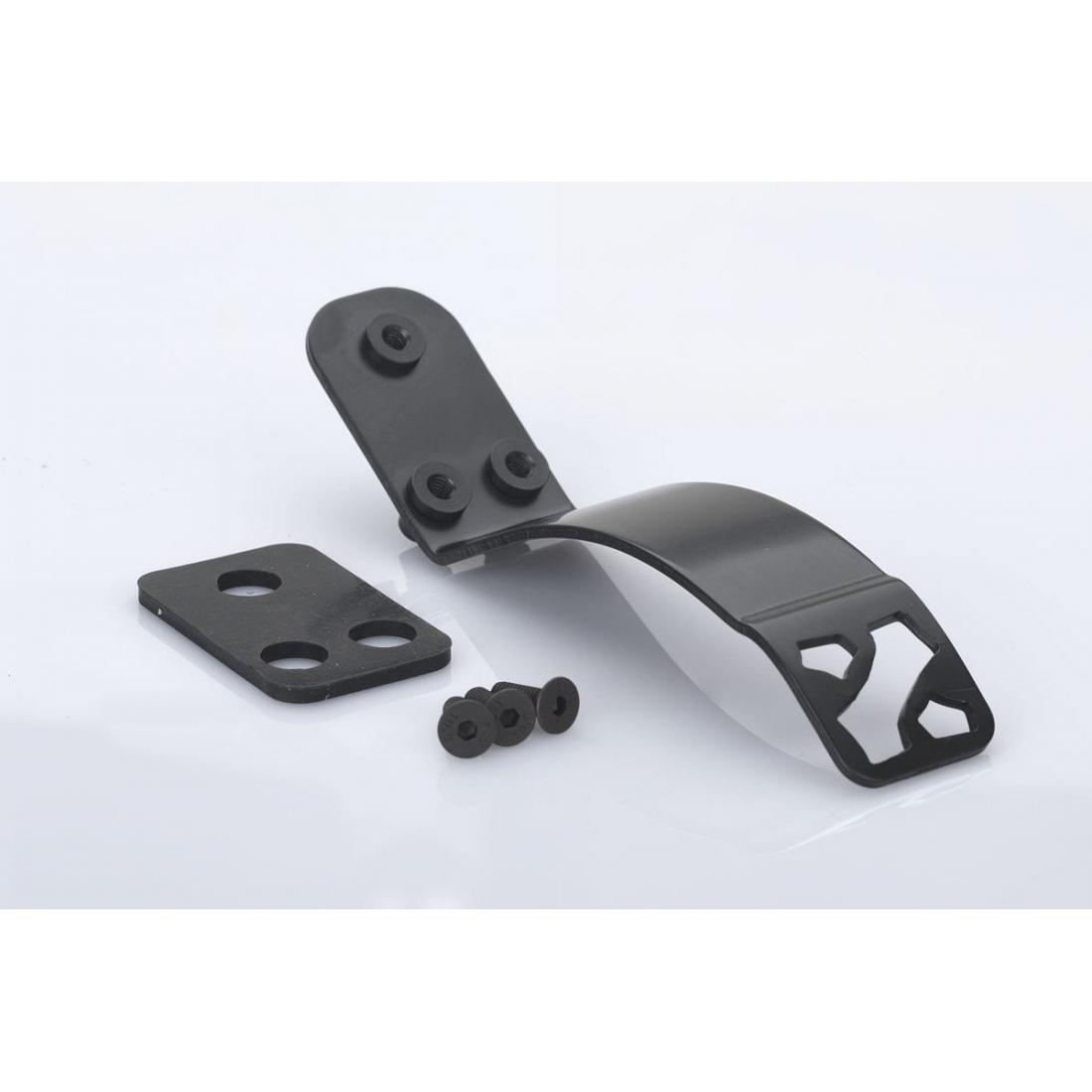
10: Scooter Brakes
We design scooter brakes to slow you down or to avoid an accident, just like a bike or car. Gently press on the brake while leaning your weight backward on the scooter for optimal braking power. You should never block your wheel or brake on the scooter. This will result in poor breaking power and will also create flat spots on your wheel, no matter how high quality your wheels.
The most commonly used brakes are spring brakes and flex fender brakes. We mount the sprint brake to a bolt which we then attach to the deck. A spring on the bolt makes sure the brake points upwards and away from the deck. While a flex fender brake is a long, metal plate that has been pre-bent to fit around the wheel. This usually attaches to the deck with one or more screws. Pushing down on the metal plate will make the entire platen bend towards the wheel. Not all brakes fit all decks, so it is important to check what type of deck you have before shopping for new brakes.
Brakes will generally fit all wheel types but if you’re using a flex fender brake, you need to ensure you change your wheels before they are totally worn down. This is because you can break your brakes if you are using worn down wheels. This is because the plate has to reach further and travel longer to reach the wheel. This strain can eventually cause it to snap. So always check your wheels and brakes and replace them as needed, not after they completely break!
Looking for the best scooter parts in Australia? Sacrifice Scooters carries Australia’s best and highest quality scooter parts, tested and created with help from our pro riders. No matter what kinds of parts you need, we can help you! Looking to build your first scooter from scratch? Need to replace parts on your current scooter? Explore our store today or contact us for help!





